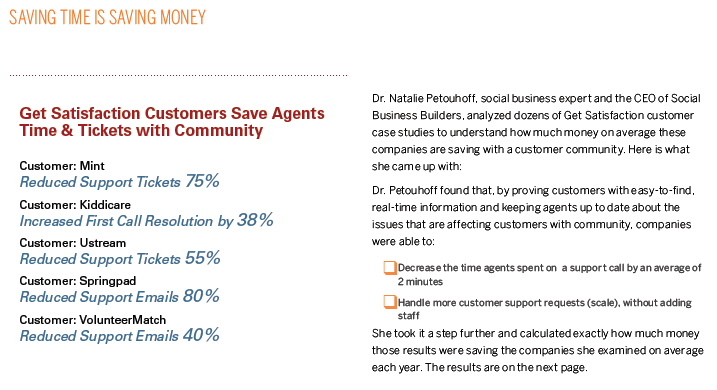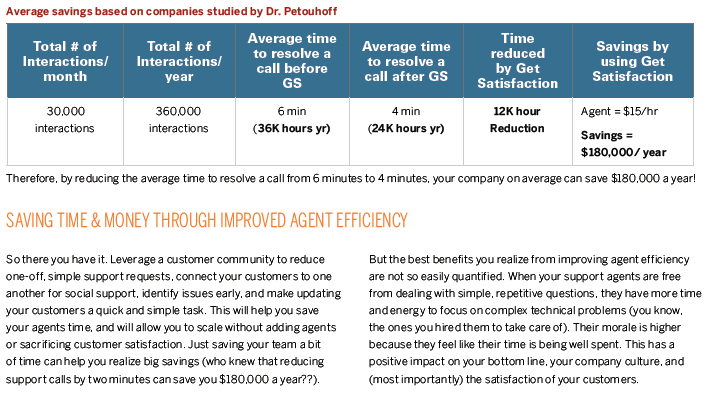Community-Based Support Compliments the Contact Center
Community-based, social support doesn’t have to exist in a bubble—it’s a great way to complement and complete agent-based support strategies. Let’s say, for example, that your software product is acting a little buggy when it’s used with a certain operating system.
A customer can’t figure out what to do, so he calls in and gets an answer. A couple weeks later, someone else has the same issue, but they post in the community instead. This might be a younger or more tech-savvy customer who prefers to reach support online, or maybe they just did a quick Google search and were brought to the community that way. The customer who called support originally sees the post and reports what the phone agent told them as a response to the community topic.
Now the answer exists in the community as a resource for everyone in the future who has this problem. They can discover it through search or by going there directly. Each person who sees the answer is equal to one fewer call to an agent.
Community as the Canary in the Coal Mine
Until recently, support was strictly reactionary. With the adoption of community as a key support tool, we’re seeing entire support organizations evolve from reactionary “fixers,” to agents working collaboratively with community members to identify bugs and issues before they come become widespread problems.
When your agents are on the front lines, getting real-time feedback about the things that aren’t working, they can be prepared to address them fully and effectively with others who are likely to be experiencing the same issue. This saves the agents time and stress, as they have deeper, more immediate insight into where things are breaking down before they get on the phone with an angry customer.
And the fact that the agent is already aware of issues and possible solutions before they take that call means the customer is more likely to get off the phone feeling like they’re in good, capable hands.
Close the Loop
As any good support agent knows, it’s not just important to provide customers with immediate assistance, but also to close the loop and keep them updated about new developments as well. This may be when a bug has been fixed, a new feature has been released or rolled back, or a work-around has been uncovered.
A customer community makes it fast and easy to provide your customers with the most up-to-date information. What previously would have required individual emails, Tweets, or status updates, now can be accomplished with one simple community update.
You can post a company update for big notifications, or just post an “official reply” to a topic, so everyone who has expressed interest in that topic will get an email notification of the update. That also means that when the next person who experiences that issue comes to your community, they will find the answer waiting for them there. How’s that for efficiency?
Dr. Natalie: voted Top 20 In Social Media HuffPo
Dr. Natalie’s ebook: voted as one of the Top Ten Most downloaded Social Media ebooks- On smROI




